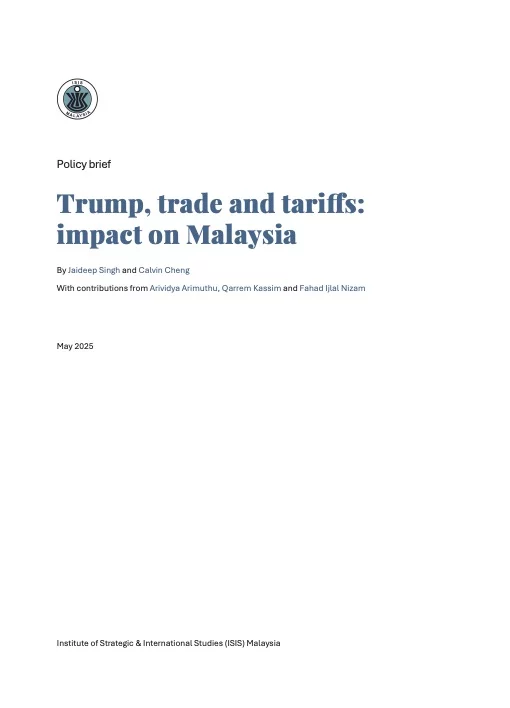By Jaideep Singh and Calvin Cheng
With contributions from Arividya Arimuthu, Qarrem Kassim and Fahad Ijlal Nizam
May 2025
Executive summary
- In April 2025, US President Donald Trump announced country-specific “reciprocal” tariffs on imports from most countries, including a 24% tariff rate on Malaysia (Section 1). The tariffs are expected to come into effect on 9 July, barring any successful negotiation to reduce, postpone or cancel them (Section 6).
- To justify the tariffs, Trump invoked unprecedented emergency executive powers on the back of the trade deficit in goods, disproportionately blaming foreign partners’ trade policies for the supposed loss of American economic competitiveness (Section 1.2).
- In the short and medium run, Trump’s tariffs could have an impact on Malaysia through three channels: direct price exposure, trade diversion and macro-financial spillovers (Sections 2 and 5).
- Malaysia’s export exposure to the US market is substantial and growing, with the US accounting for 13% of total exports, surpassing China in 2024. However, much of this trade is in electronic products, including semiconductors, many of which are currently exempted from Trump’s tariffs. These targeted carve-outs soften the immediate blow: only about 55% of Malaysia’s US exports bear the full duty, resulting in a trade-weighted average tariff of roughly 14% (Section 3).
- Diversion dynamics will decide the medium-term outcome. The US’ effective tariff on China remains the highest of any country, so competing trading partners with similar export profiles to the US at lower tariff rates are best placed to benefit from positive trade diversion out of China. India and Mexico are the biggest potential beneficiaries but Malaysia can still gain if US buyers shift from Chinese goods (Section 4.1).
- Trade diversion can also manifest as negative out-diversion from Malaysia to lower-tariff rivals in similar product segments, such as Mexico or the Philippines. Malaysia could lose market share of US imports to these competitors, particularly in product segments where it is not an indispensable import source, such as tariff-exposed camera parts (Section 4.2).
- There is a risk that Malaysia could become a dumping ground for China’s excess capacity, primarily in product segments where China currently relies heavily on US import demand, including machinery and plastics (Section 4.3).
- Policymakers should lock in existing exemptions through trade talks, streamline origin-verification to seize positive diversion, bolster cost competitiveness to deter out-diversion, and keep safeguard instruments ready to counter import dumping (Section 7).





